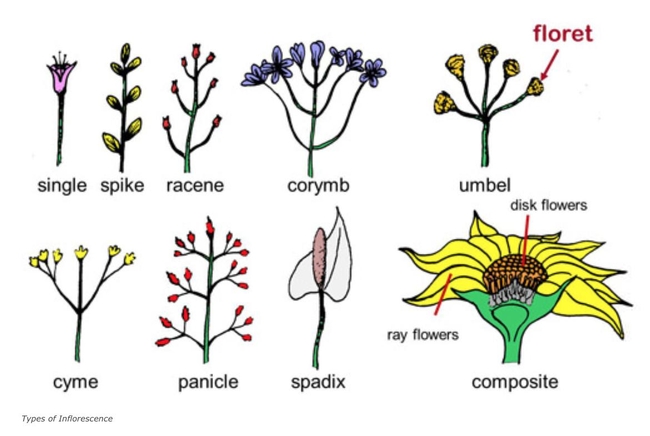INFLORESCENCE: An inflorescence is a single, group, or cluster of flowers arranged on a stem that is composed of a main branch or a complicated arrangement of branches. It is the modified part of the shoot of seed plants where flowers are formed. There are also subdivisions of each main flower type.
Examples of different flower structures are as follows:
-
Single: Tulip, hybrid tea rose
-
Spike: Flowers on a main stem; bottom florets open first: gladiolas, ajuga.
-
Raceme: Modified spike with flowers attached with tiny stems: snapdragons, bleeding heart.
-
Corymb: Small stems arranged along the main stem. Outer florets have longer stems than inner florets giving the display a “flat” top: yarrow, crabapple.
-
Umbel: Similar look as a corymb, however the small stems are attached to the main flower stem at a single point. The outer florets open first.
-
Cyme: Similar attachment of small stems to a single point of the main stem. Inner-most flower opens first: floribunda roses.
-
Panicle: A flower spike with repeated branching. It can be made up of corymbs, umbels, racemes, or spikes: begonias.
-
Spadix: Showy part of the flower is actually a bract or spathe, partially surrounding the male and female flowers inside: jack in the pulpit, calla lily, caladium.
-
Composite/Capitulum: A daisy-like flower composed of ray flowers around the edge and disc flowers in the center of the flat head. The disc flowers produce the seeds: sunflowers, asters. On some examples, the ray flowers and disc flowers look similar: dahlias, chrysanthemums.
https://worldoffloweringplants.com/inflorescence-flower-arrangement-stem/
